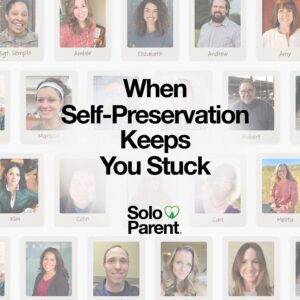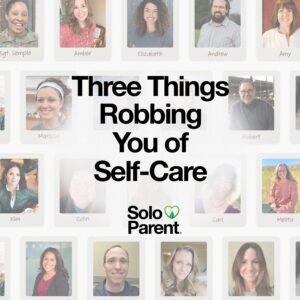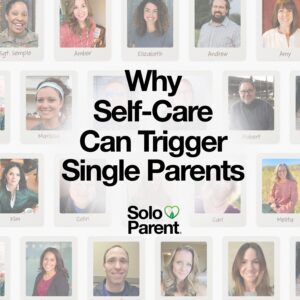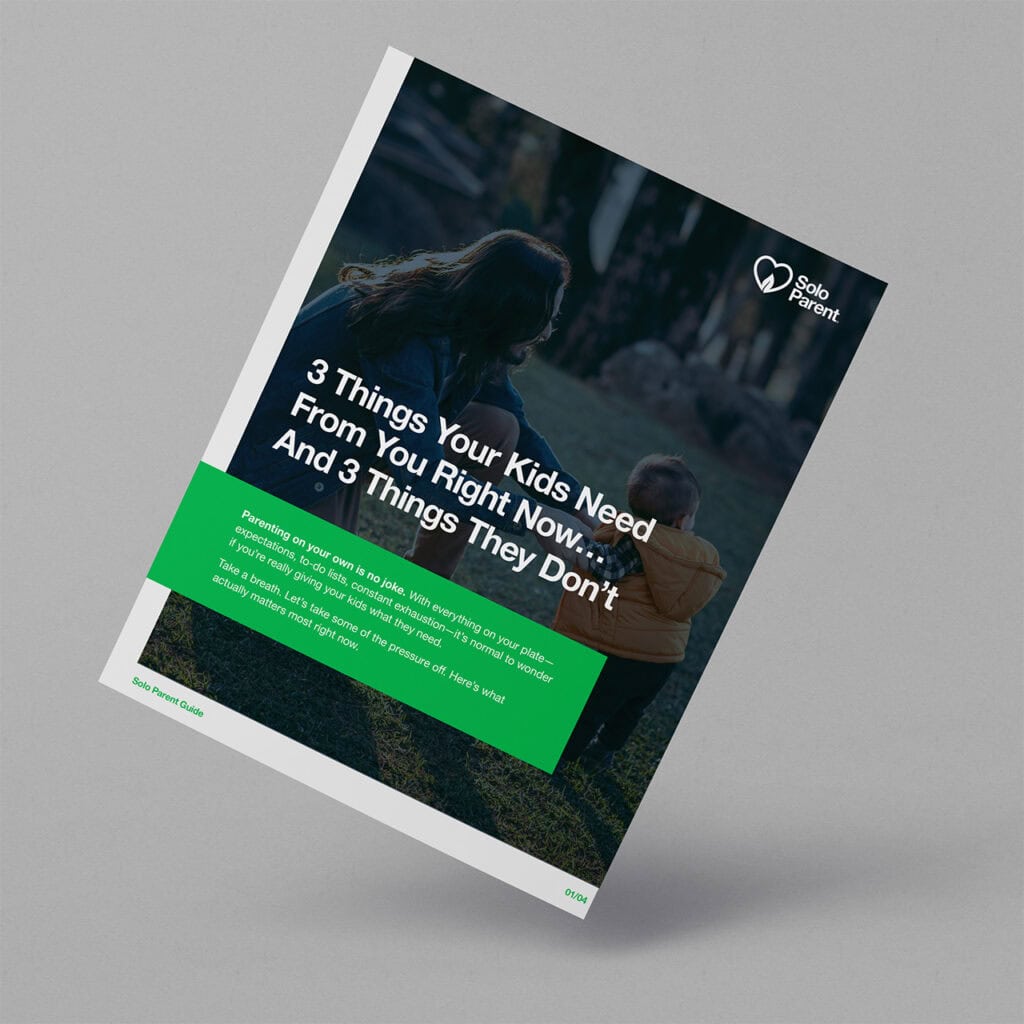You can be doing all the “right” things and still feel your strength thinning. The bills do not pause. The decisions do not slow down. Your heart is carrying more than it used to, and some days it feels like your bounce-back got shorter while the setbacks got louder. If that is you, you are not broken. You are human. And there are ways to build a steadier kind of resilience that helps you move through hard things without pretending they are not hard.
The pain points that surfaced in this conversation are familiar to solo parents: we confuse resilience with powering through, we get stuck in feelings without taking the next step, and we doubt ourselves until analysis becomes paralysis. Underneath those patterns sits a deeper ache, the wish to go back to who we were before the divorce, the job loss, the death, the disappointment. We cannot go back. But we can grow forward.
Key Insights from This Episode
- Resilience is a skill, not a personality type.
- Feeling your feelings is vital, but it is not the whole work.
- Train resilience with simple, repeatable practices.
Resilience is a skill, not a personality type.
When we talk about resilience, it helps to start with what it is and what it is not. Resilience is the capacity to recover and adapt in the face of stress and adversity. It is not denial, and it is not forced optimism.
Amber Fuller, a counselor with a Masters in Marriage and Family Therapy (MMFT), shared research that places resilience inside the realm of practice. You are not born with it in a fixed amount. Your brain can change through experience. That is good news for tired hearts. It means your present capacity is not your ceiling.
Elizabeth Cole, a single parent, named something many of us have done. Early on, resilience looked like keeping her head down and muscling through. It helped her survive for a time, but it also ignored what was true inside. That kind of “strength” eventually collapses under weight it refuses to acknowledge. Real resilience does not pretend. It honors the ache, then chooses a next step that aligns with healing.
There is also the very human desire to get back to who we were before everything changed. After deep losses, that old version of ourselves can feel like a warm house we want to reenter. Elizabeth spoke honestly about crossing a point of no return. She cannot unknow what she has learned, and she would not want to. That is part of resilience too, the humility to let grief and growth reshape identity without losing your core.
Feeling your feelings is vital, but it is not the whole work.
The places we get stuck are not signs of failure. They are invitations to adjust how we move.
Robert Beeson, Founder/CEO of Solo Parent, named imposter syndrome, that accusing voice from the past that says you do not belong, you are not credible, you should be quiet. It stalls forward motion.
Amber named the cousin to that voice, overthinking. We tell ourselves we are being careful or strategic, but the real motive is fear. We try to imagine every possible outcome so we will not be hurt again. The result is often inaction.
A simple inventory can pry open the door: I am, I have, I can. Start with identity in the present tense, I am. Name what is true about who you are right now with honesty and grace. Then list resources, I have. People, faith, community, intelligence, the couch you can collapse on after bedtime, the neighbor who says yes when you ask. From there, decide on one small step, I can. Not the perfect step, not the final step, just the next one you can take today.
We also need to revisit our comfort zones with fresh eyes. Comfort is not always pleasant. Sometimes the “comfortable” place is a familiar sadness or a well-worn story about ourselves. Talking about feelings can become a comfortable cul-de-sac if we never turn the wheel toward action. Resilience asks us to use emotion as information, then make a choice aligned with healing.
Train resilience with simple, repeatable practices.
Training your brain for resilience sounds technical, but it is very human. Amber offered three protective practices that buffer us in pain.
First, self-kindness. Talk to yourself like you would a close friend who is struggling. Shame hammers us into hiding. Kindness nudges us into growth.
Second, common humanity. Remember you are not the only person to walk this road. Community reframes hardship. When someone across the circle nods because they have been there, you feel less strange and more seen. That sense of “me too” steadies your legs.
Third, mindful right-sizing. Name what is happening without making it everything or nothing. Minimizing keeps us brittle. Catastrophizing keeps us overwhelmed. Right-sizing is honest, this is hard and it is not the end of my story.
Practice creates pathways. Boundaries, for example, are not just relational fences. They are resilience training. Elizabeth described a new season of uncomfortable boundary-setting that is building strength she did not have before. It feels awkward because it is new. That discomfort is not a sign you are doing it wrong. It is the sensation of growing.
Perspective helps. No one is being asked to assign perfect purpose to pain. Still, it can be brave to ask, is there anything good that could grow here. Progress, not perfection, is the movement. Each small step rewires something in the brain that says, I can do hard things and remain myself.
Honesty also keeps us tender. When Robert asked what each person is currently struggling to be resilient in, the answers were raw. Amber spoke about loss and the ache of not knowing how to replace what was taken. Elizabeth talked about parenting on empty, missing the playful mom she was before a hard year. Robert shared about the ongoing complexity of parenting adult kids. None of this wraps into a tidy bow. It is life, and it is where resilience is formed.
The question is not whether we ever wobble. The question is whether we can get smaller when the future feels too big. Amber suggested slicing the task thin, what can you do today with what you have. Text a friend. Sit on the porch for five minutes. Put the phone down for the first thirty minutes after bedtime. Name one feeling out loud. Pray one honest prayer. Small steps count.
Listener Question
“How do I raise emotionally strong kids when I am still doing so much healing myself?”
Elizabeth answered with a story many parents will recognize. After switching homes, her son felt sad about leaving his dad. Instead of fixing it or dismissing it, she invited him to notice what his body was saying. He grew quiet and said, “I am listening to my body to figure out what I am feeling.” He landed on sadness and confusion, then named what he needed. They worked out a plan together. That moment did not happen by accident. He had watched his mom practice, breathe, and name her own feelings many times.
Robert reminded us that more is caught than taught. Our kids are watching how we attach to life. If they see us breathe, name, and choose a next step, they learn to do the same. Amber added the encouragement that today is a good day to start. We do not need to have our healing finished to model emotionally honest living. We just need to practice what we want to pass on, one small moment at a time.
Stay Connected + Get Support
We want to answer any Solo Parent questions you may have. Submit your listener questions HERE.
Additional Resources:




